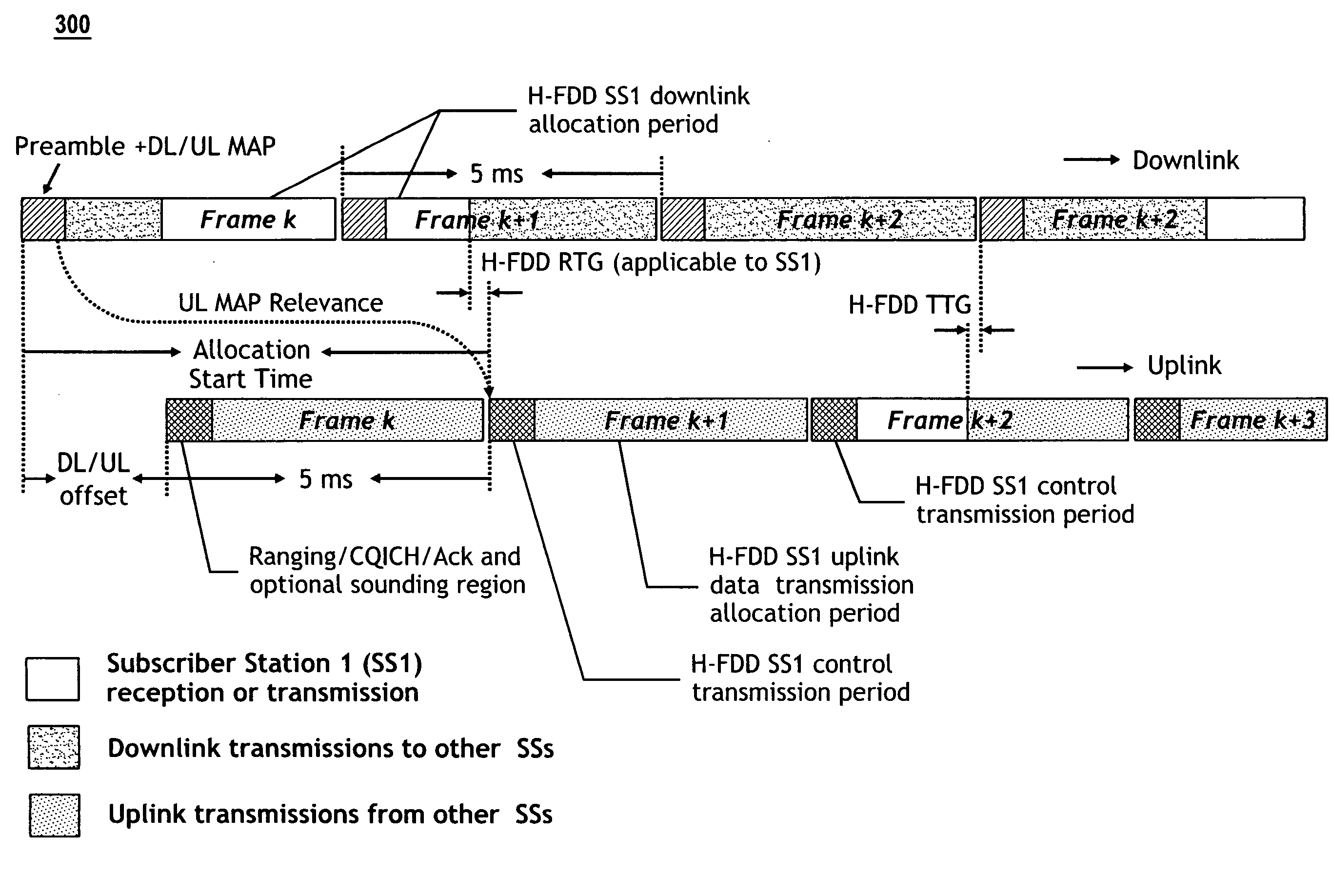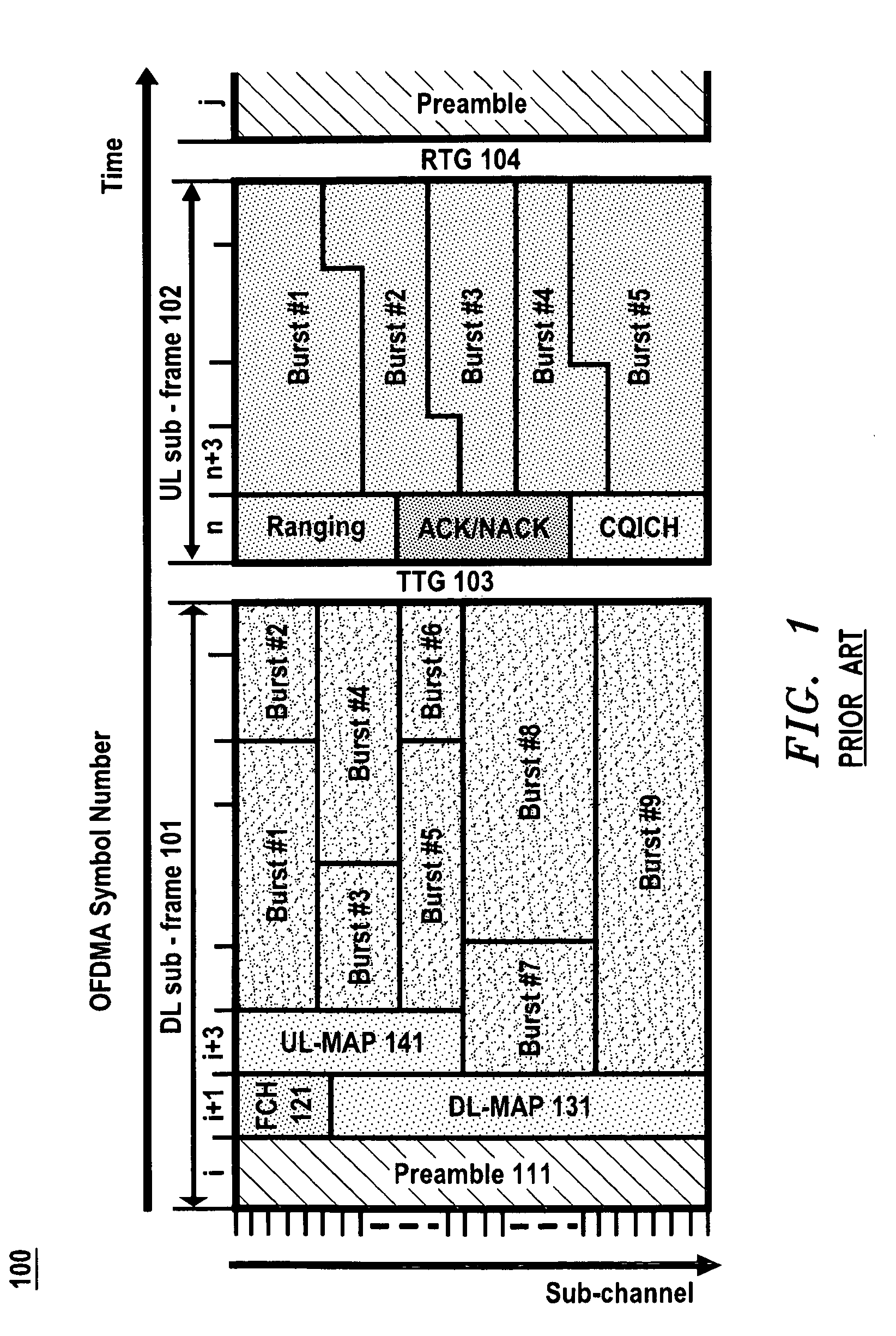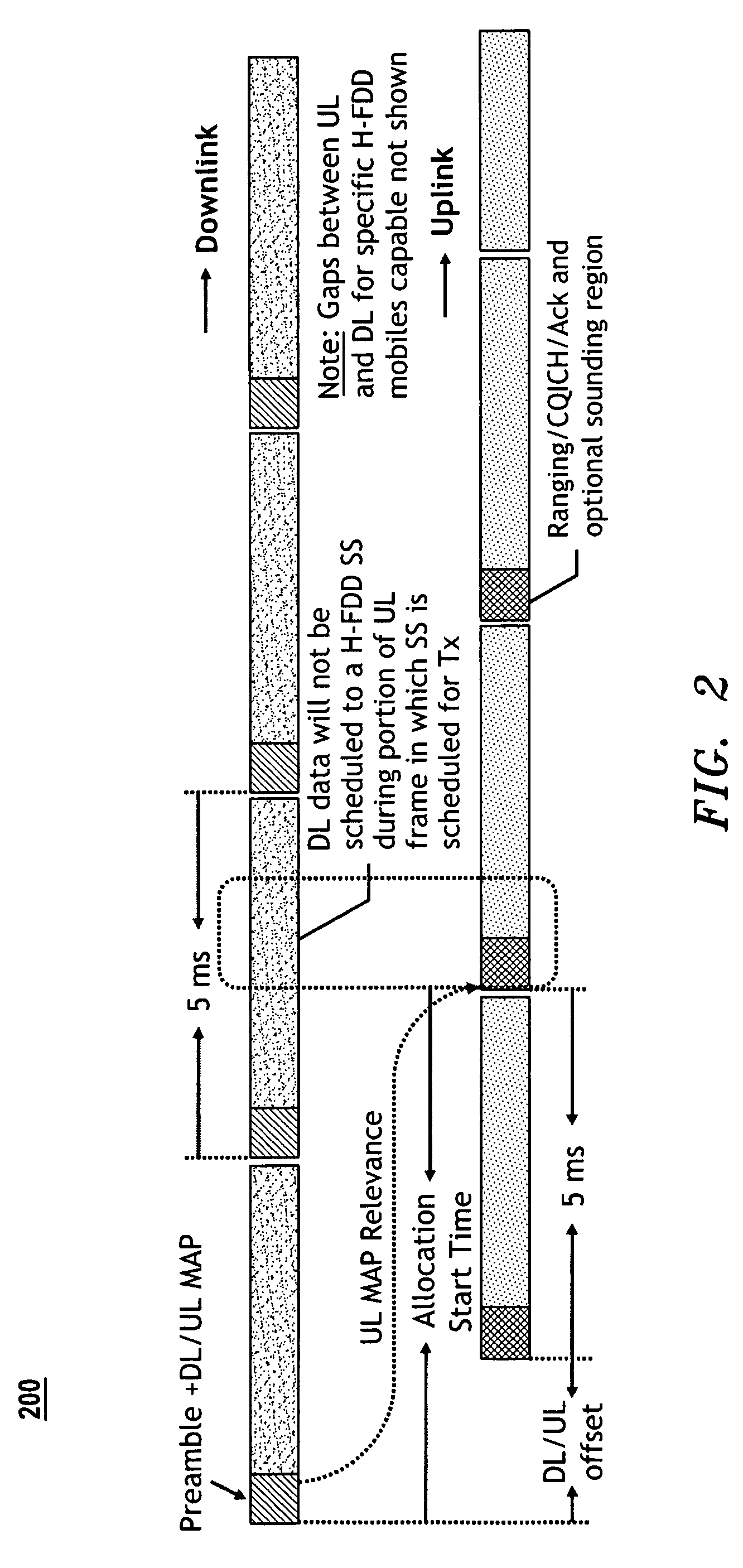Method for half-and full-duplex subscriber station operation in frequency division duplex systems
a subscriber station and frequency division duplex technology, applied in the field of communication systems, can solve the problems of not receiving data during the downlink frame nor getting allocation for the corresponding ul frame, and achieve the effect of maximizing the utilization of both dl and sinr
- Summary
- Abstract
- Description
- Claims
- Application Information
AI Technical Summary
Benefits of technology
Problems solved by technology
Method used
Image
Examples
Embodiment Construction
[0030]FIGS. 2 through 6 depict exemplary embodiments of the present invention, and more particularly embodiments that are applicable to an IEEE 802.16e / WiMAX based system. FIG. 2 illustrates the frame structure 200 from a base station perspective while FIG. 3 illustrates H-FDD operation with proposed frame structure 300; the DL / UL offset is shown modulo FD.
[0031]An exemplary embodiment of the present invention allows the start of the uplink frame to be offset relative to the downlink by an AST (Allocation Start Time). The AST is preferably signaled by the Base Station (BS) to the Subscriber Station (SS) so it knows both the DL and UL frame start and end times. In an exemplary system embodiment as shown in FIGS. 2 and 3, the AST can assume any value greater than the FD but less than 2*FD, where FD denotes the greater of the duration of one Downlink (DL) or Uplink (UL) frame. In this case because of the periodic nature of the frames, the actual observed DL-UL frame offset would be AST...
PUM
 Login to View More
Login to View More Abstract
Description
Claims
Application Information
 Login to View More
Login to View More - R&D
- Intellectual Property
- Life Sciences
- Materials
- Tech Scout
- Unparalleled Data Quality
- Higher Quality Content
- 60% Fewer Hallucinations
Browse by: Latest US Patents, China's latest patents, Technical Efficacy Thesaurus, Application Domain, Technology Topic, Popular Technical Reports.
© 2025 PatSnap. All rights reserved.Legal|Privacy policy|Modern Slavery Act Transparency Statement|Sitemap|About US| Contact US: help@patsnap.com



